Review: Lenovo ThinkPad X1 Fold - A glimpse into the laptop future where electronics meets origami
The Lenovo ThinkPad X1 Fold is among the first laptops whose screen folds like a book.
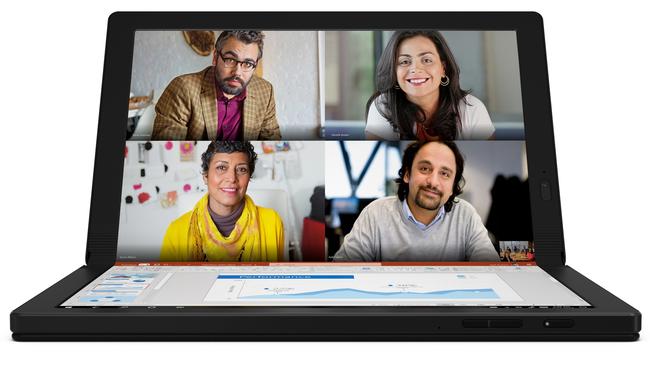
The Lenovo ThinkPad X1 Fold is among the first laptops whose screen folds like a book. It‘s clever technology and it’s where electronics meets origami.
You get a two-in-one style laptop when the display is fully opened. It’s somewhat like a Microsoft Surface, with a large 13.3-inch high resolution OLED screen and separate Bluetooth mini keyboard. You can use Lenovo’s mod pen to write on it in tablet mode.
When you begin folding the screen, it becomes like a book and you can read a PDF file in a two-page view. When you place the mini keyboard over the bottom half of the screen, it snaps onto it magnetically and you have a smaller laptop with a 9.6-inch screen comprising the top half. It’s small enough to comfortably fit on an aircraft tray table – good for when we fly again.
Snap the screen closed altogether and you have a book that fits snugly in a briefcase. It’s not that big at 158x236x28mm. Lenovo uses black leather for the outer covering for a premium look and it does look classy.
In this age of bendable computer screens, we’re seeing TVs like LG’s Signature OLED R that roll up like an old-fashioned window blind, flip phones by Motorola and Samsung, and folding phones by Royole, Samsung and Huawei that morph between phones and tablets.
Flexible displays have existed since the days of Xerox and e-paper in the 1970s. About 8 years ago I visited Hewlett Packard Labs in Silicon Valley which had developed a display that fitted around your forearm, mainly for military use. It’s taken decades for companies to develop commercially-viable flexible backing materials that are durable and capable of supporting screens approximating the quality of rigid displays.
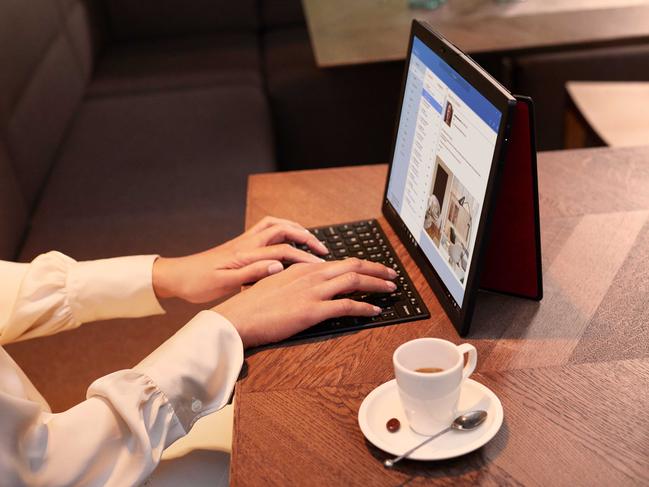
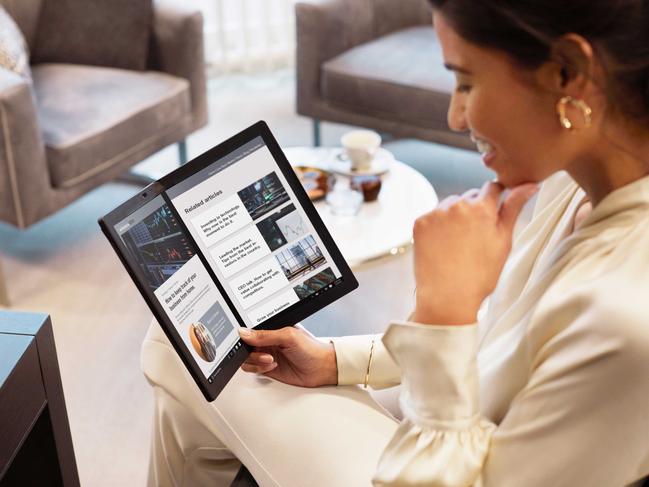

You’ll pay at least $3894.05 to own an X1 Fold. That’s the price of the cheapest variant with an Intel Lakefield Core i5 processor released in Q2 last year. That’s a motser for a laptop of this size, so X1 Fold will appeal mainly to early adopters.
However, as the production of these flexible screens ramps up, they’ll become cheaper and more affordable. Remember when 4K TV sold for more than $10,000? You can buy a reasonable 4K set now for a few hundred dollars.
The durability of the folding mechanism remains the unknown for now. How many months or years will they last?
Lenovo says it spent five years developing the X1 Fold hinge mechanism. Work included ensuring the hinge would not crease or bubble when folded for lengthy periods. The mechanism had to withstand being the user’s main computing device.
Lenovo says the back frame consists of carbon fibre plates and the protective shell is made from magnessium alloy. A foldable graphite layer offers cooling.
The X1 Fold behaves like a standard Window 10 laptop running Home 64 or Pro 64. Lenovo has added a “mode switcher” which lets you swap between full screen and dual screen use. The mode switcher menu displays automatically when you fold and unfold the screen. You choose either full screen or half screen mode, and you have some control over which apps appear on the top or bottom panel in half screen mode.
A couple of times the unit refused to switch from half to full screen mode, but it was in the midst of downloading a Windows update and a reboot fixed that. On one occasion, I had to re-pair the Bluetooth keyboard. These may be the foibles of the engineering sample I had. For the most part, the X1 Fold behaved properly.
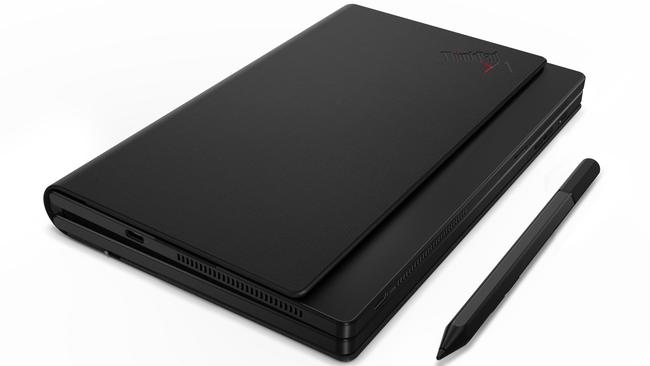
Typing using the mini keyboard is good. The keys are close to regular keyboard size even though the keyboard is narrow. Lenovo ditched some punctuation keys and a numeric keyboard to make this possible. To address this, some punctuation keys display four symbols with four modes: regular, press caps, press the function key, and press shift/function. Because the keyboard back is smooth, it can be a bit slippery on a shiny surface and move, while you are typing.
I performed some of our regular tests. Cinebench R15 returned 37.18 frames per second and the processor returned a CB score of 210. This isn’t so fantastic, probably due to Lenovo having to ship the X1 Fold with a Core i5 processor. The laptop uses Intel UHD 11th generation graphics.
Battery life also isn’t that spectacular. I played a 1080p video continuously at 50 per cent brightness and the 50Wh battery delivered 5 hours 52 minutes of power.
Still you get some good specs. The 13.3-inch flexible display has a high resolution of 3.2 million pixels, and is bright at 300 nits.
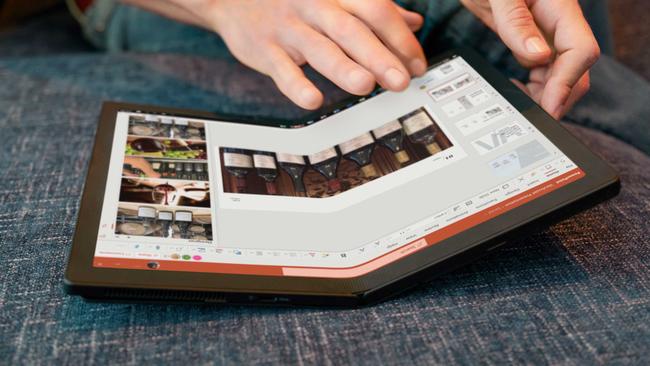
The X1 Fold supports Wi-Fi 6, has 8GB of memory, options of 256GB, 512GB and 1TB for storage, a reasonable resolution 5MP wide angle lens front facing camera, and Dolby Atmos speakers.
It has two USB3.2 type C ports. You use one of these for charging. You’ll have to add an adaptor to one of the USB-C ports if you need other types of connections.
The X1 fold supports Wi-Fi 6 and while mine is Wi-Fi only, models will be available with a nanoSIM slot.
Models range from $3895.05 to $5889.05 and you pay extra for the mini keyboard and mod pen. Supply is through Lenovo’s commercial and web channels.
It certainly is expensive but the Lenovo ThinkPad X1 Fold offers a glimpse into the future of laptops. I’m sure we’ll see much more foldable laptops in time.

To join the conversation, please log in. Don't have an account? Register
Join the conversation, you are commenting as Logout